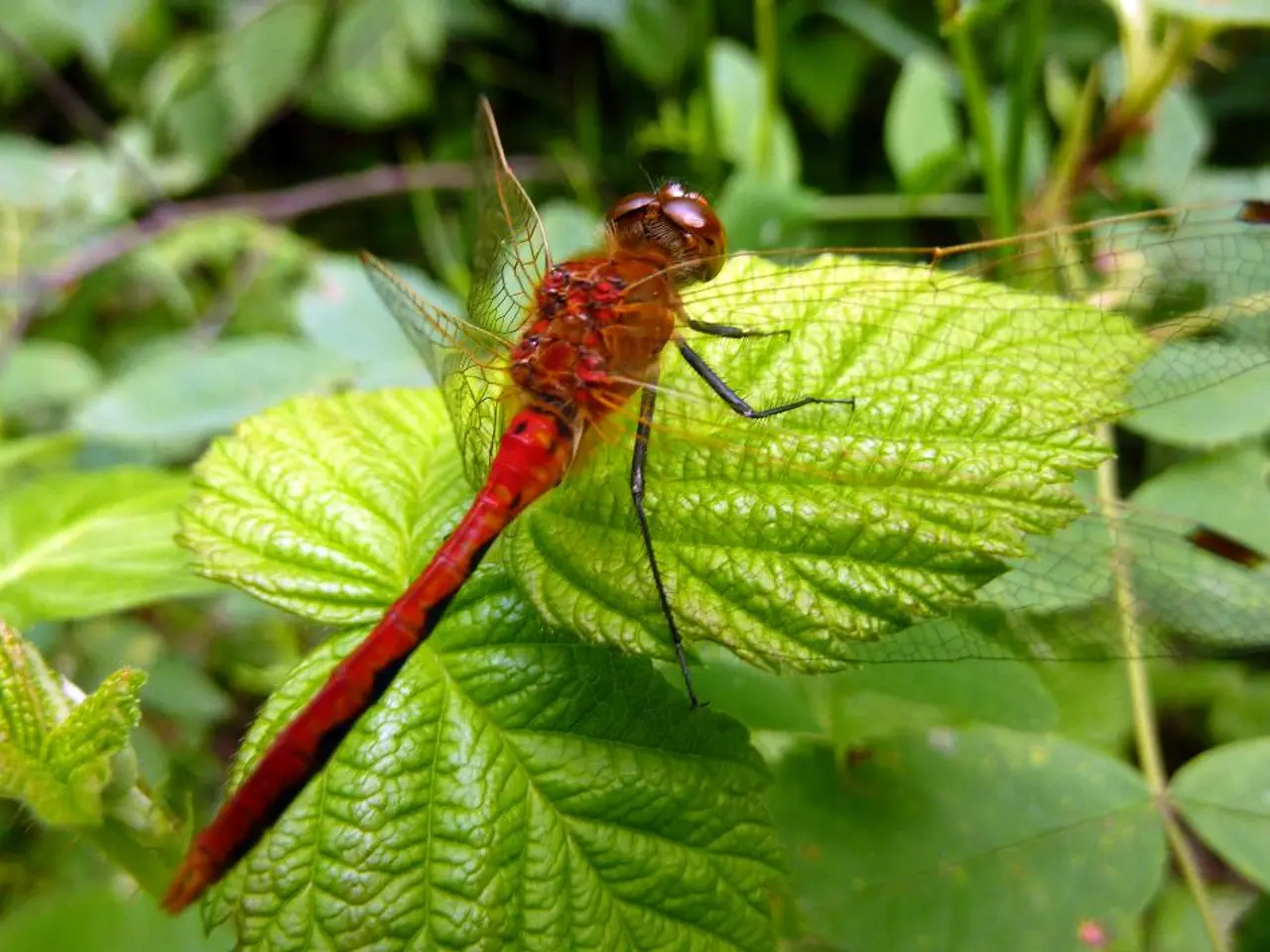Ohio's Pesky intruders: Praying Mantises
In the bucolic landscapes of Ohio, one can find an intriguing inhabitant - the praying mantis. These fascinating creatures, such as the Chinese praying mantis (Tenodera sinensis) and the European mantis (Mantis religiosa), share several common characteristics and a distinct life cycle.
Common Characteristics:
These insects are easily recognisable by their triangular head adorned with large compound eyes and a flexible neck, enabling them to scan their surroundings. Their forelegs are raptorial, adapted for grasping prey tightly. They are ambush predators, relying on camouflage and patience to catch their insect prey. An interesting feature is their ability to regenerate lost limbs after molting. The Chinese praying mantis, a species found in Ohio, is relatively large and greenish-brown, with a green lateral strip along the edge of its front wings[4].
Life Cycle:
The life cycle of these mantids is intriguing. Females lay eggs in frothy cases called oothecae, usually attached to vegetation. These eggs hatch into small nymphs resembling adults without wings. They go through multiple molts, shedding their exoskeleton to grow. After several molts, mantids reach adulthood with wings. This occurs in late summer to early fall in Ohio, coinciding with peak hunting and mating[1].
Adults mate, and females may exhibit sexual cannibalism, occasionally eating males after or during mating. The eggs overwinter in oothecae until hatching the following spring[1].
This annual cycle aligns with seasonal changes in temperate climates like Ohio's. Mantids are sit-and-wait hunters, often called praying mantids. They are extreme generalists and will feed on both pests and beneficial insects, including bees and spiders.
Three species of mantids are found in Ohio: the European mantid, the Chinese mantid, and the Carolina mantid (Stagmomantis carolina). The latter has males and females with a dark spot on the forewing, and the abdomen of females is widened laterally and the wings only cover 3/4 of the abdomen length.
Observing mantids can be a great way to introduce young people to entomology. It's important to note that mantids do not bite humans.
[1] Ohio State University Extension. (2018). Praying Mantis. Retrieved from https://ohioline.osu.edu/factsheet/ent-9 [4] National Wildlife Federation. (n.d.). Chinese Mantis. Retrieved from https://www.nwf.org/Educational-Resources/Wildlife-Guide/Invertebrates/Chinese-Mantis
In the home-and-garden setting of Ohio, observing the life of the praying mantis can be an engaging way to introduce young people to entomology. With a lifestyle that perfectly aligns with the seasonal changes in the region, these intriguing creatures like the Chinese praying mantis and the European mantis are often found in gardens, conveniently camouflaging themselves among vegetation to ambush their prey.



